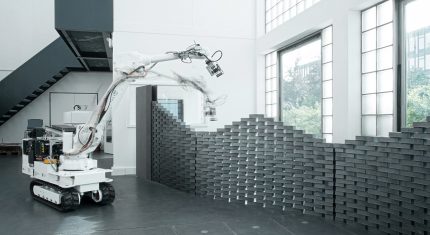20.02.2025
Automation in Construction: The Role of Robots and AI
The construction industry is undergoing a technological revolution, with automation, robotics, and artificial intelligence (AI) playing a pivotal role in transforming traditional building processes. As labor shortages, rising costs, and safety concerns challenge the sector, automation is emerging as a solution to enhance efficiency, accuracy, and productivity. This article explores how robots and AI are shaping the future of construction.
The Need for Automation in Construction
The global construction industry faces multiple challenges that make automation an essential evolution:
Labor shortages: Many countries are experiencing a decline in skilled labor, leading to project delays and higher costs.
Safety concerns: Construction remains one of the most dangerous industries, with thousands of accidents reported annually.
Rising material costs: Optimizing material use through AI-driven automation reduces waste and expenses.
Project inefficiencies: Manual processes often lead to errors, rework, and cost overruns.
The Role of Robots in Construction
Robotic systems are being integrated into construction sites to streamline processes and enhance precision. Key types of robots in construction include:
1. Bricklaying and Masonry Robots
Robots like SAM100 (Semi-Automated Mason) can lay bricks three times faster than human workers.
These robots reduce physical strain on workers and increase consistency in wall construction.
2. 3D Printing Robots
Contour Crafting and ICON’s Vulcan printer can print entire houses using concrete in a fraction of the time compared to traditional methods.
Example: In 2021, a 3D-printed house in the Netherlands was completed in just five days.
3. Demolition Robots
Autonomous demolition robots can dismantle structures with precision, reducing human exposure to hazardous environments.
Example: The Brokk 170 robot is widely used for controlled demolitions in high-risk areas.
4. Autonomous Construction Vehicles
Self-driving bulldozers, excavators, and dump trucks improve site efficiency.
Companies like Caterpillar and Komatsu have developed autonomous machinery that operates 24/7, reducing project timelines.

Artificial Intelligence in Construction
AI-powered solutions are revolutionizing the way construction projects are designed, planned, and executed.
1. AI for Project Planning and Management
AI-driven software predicts project risks, timelines, and material requirements.
Example: Building Information Modeling (BIM) utilizes AI to optimize designs and reduce project errors.
2. AI-Powered Quality Control
AI systems analyze construction progress using drones and computer vision.
Example: Boston Dynamics’ Spot robot conducts real-time inspections to detect structural issues before they escalate.
3. Predictive Maintenance with AI
AI monitors equipment health, preventing unexpected breakdowns and costly repairs.
Example: Predictive analytics in cranes and drilling machines reduce downtime by up to 30%.

Benefits of Automation in Construction
The integration of robots and AI in construction offers numerous advantages:
Increased efficiency: Automated systems complete tasks significantly faster than manual labor.
Cost savings: AI reduces waste and optimizes material use, leading to financial savings.
Enhanced safety: Robots handle hazardous tasks, reducing workplace injuries.
Improved precision: AI-driven models minimize design errors and enhance construction accuracy.
Challenges and Future Outlook
While automation in construction presents many benefits, challenges remain:
High initial costs: The adoption of robots and AI requires significant investment.
Workforce adaptation: Construction workers need training to operate and integrate automated systems.
Regulatory compliance: Governments must establish guidelines for AI and robotic implementation in construction.
The future of construction will see increased reliance on automation, with AI and robotics expected to boost productivity by 40% by 2030. As technology continues to advance, automated construction methods will become the industry standard, reshaping how buildings and infrastructure are developed worldwide.
Automation, robots, and AI are revolutionizing construction, making it more efficient, safe, and cost-effective. While challenges exist, the long-term benefits outweigh the initial hurdles. As the industry embraces digital transformation, the role of technology in construction will only grow, paving the way for smarter, faster, and more sustainable building practices.
Revolutionize Your Projects with Plandi.io
For companies embracing automation, Plandi.io offers tools to streamline construction projects. From detailed BIM models to connecting with professionals experienced in advanced technologies, Plandi.io bridges the gap between innovation and execution. Build smarter and faster with Plandi.io’s comprehensive support.
The article was useful to you?
4
12
0